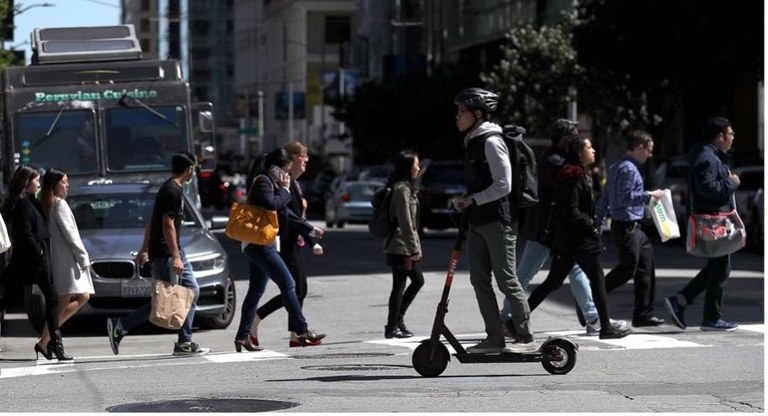GHSA Report: States need to address issues impacting e-scooter safety
Traffic Safety Pulse News
(GHSA) Amid a rapid rise in the use and prevalence of electric scooters (e-scooters) on U.S. roads and sidewalks, more must be done to address regulatory, infrastructure and educational deficiencies that are putting riders at risk. This is one of the key findings in a new research report, E-scooter Safety: Issues and Solutions, released today by the Transportation Research Board (TRB). According to the Governors Highway Safety Association (GHSA), the report also calls on GHSA’s members, the State Highway Safety Offices (SHSO), to monitor all available data and determine how best to incorporate e-scooters into their behavioral safety plans.

The report, released under the Behavioral Traffic Safety Cooperative Research Program (BTSCRP), found that available data and research evaluating e-scooter safety are lagging behind the rapid adoption and expansion of this form of transportation commonly referred to as micromobility. According to the U.S. Department of Transportation’s Bureau of Transportation Statistics, there were at least 158 U.S. cities with e-scooter systems as of July 2022, nearly double the 87 systems in operation in 2019. In 2021, the North American Bikeshare and Scootershare Association reported these systems generated 52 million e-scooter trips, up more than 50% from 2020. Personal ownership of e-scooters is also growing and projected to increase throughout this decade.
“E-scooters, which were a novelty just a few years ago, are here to stay. They are not cost prohibitive for personal use, and scooter-share systems are expanding or launching in more cities every year,” said GHSA Executive Director Jonathan Adkins. “Everyone deserves to feel safe on the road, and we must do more to prioritize safety for this growing mode of travel.”
The report discusses the state of use/exposure and safety trends among e-scooter users and markets; characterizes the relationship between e-scooter crashes, injuries and fatalities, and behavioral and environmental contributing factors; summarizes how some cities are working to support, manage and/or regulate the use of e-scooters to prevent and mitigate injuries; and includes case studies highlighting real-world practices. To read the full release, please click here.
